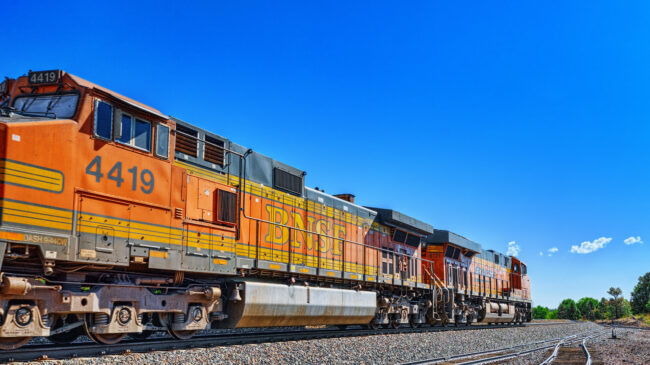Railroads were the first industry to face national industrial regulation, beginning with the Interstate Commerce Act of 1887. In the early 20th century, the common carrier rules imposed on railroads were applied in a similar fashion to motor carriers, pipelines, and telecommunications. The stringency of these rules on freight rail gradually increased for two generations despite vast changes to the economic landscape that resulted in growing competition from less-regulated modes of transportation.
By the middle of the 20th century, economic regulation began to take its toll on the railroad industry, favoring its fast-growing competitors in highway trucking and passenger aviation. Facing the imminent collapse of rail as a viable mode of freight transportation in the U.S., Congress began reducing harmful economic regulation of the industry in the 1970s, culminating in the Staggers Rail Act of 1980.
Four decades after partial deregulation, U.S. freight railroads are now the most extensive and productive in the world, but new competitive and policy threats have appeared on the horizon. Part 2 of this report surveys the history of economic regulation of the U.S. railroad industry. Part 3 examines the results of partial freight rail deregulation. Part 4 details emerging threats and recommends reforms to ensure the long-run productivity and viability of transporting freight by rail.
The U.S. railroad industry’s regulatory experience offers an important cautionary tale for proponents of additional regulation of the economy. History and practice show that even the best-intentioned regulations—those carefully seeking to balance the interests of the parties involved—can lead to distorted markets, reduced prosperity, and a variety of other unintended consequences.
This is not to say that regulatory balance, which was explicitly addressed in the Staggers Act, is not something to be considered. But the public interest is not served when regulators acquiesce to the demands of self-interested parties overly focused on the short-run impacts on a narrow slice of economic activity. Rather, advancing the public interest demands that regulators consider the unique characteristics of the industry in question and its role in the broader economy over the long run.
Shippers and unions, as well as the U.S. as a whole, have greatly benefited from the partial deregulation that followed the enactment of the Staggers Act. Even with the COVID-19-era supply chain chaos currently plaguing carriers and shippers alike, inflation-adjusted rail freight rates remain far below the heavily regulated rates of the 1970s.
While righting market wrongs is a powerful impulse for many, the error costs of government action frequently exceed the costs of market failures. As shown by the history of railroad regulation, the costs of government failure can not only be enormous, but can persist over many decades—and difficult to undo once in place. When it comes to railroad regulation, Congress and regulators should tread lightly to avoid repeating the mistakes of the past.
Freight rail deregulation: Past experience and future reforms

